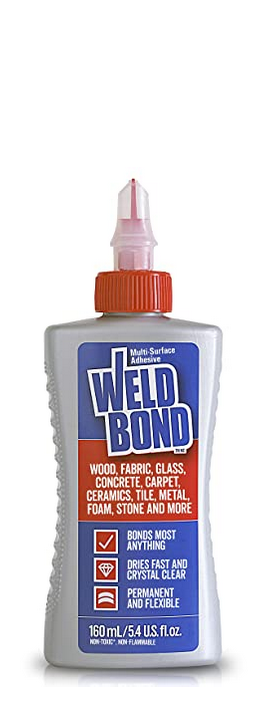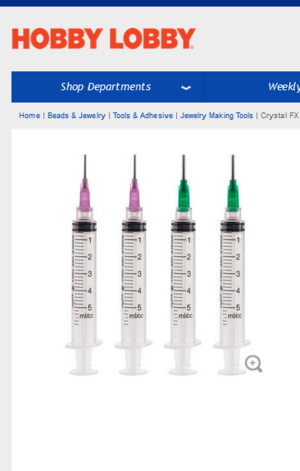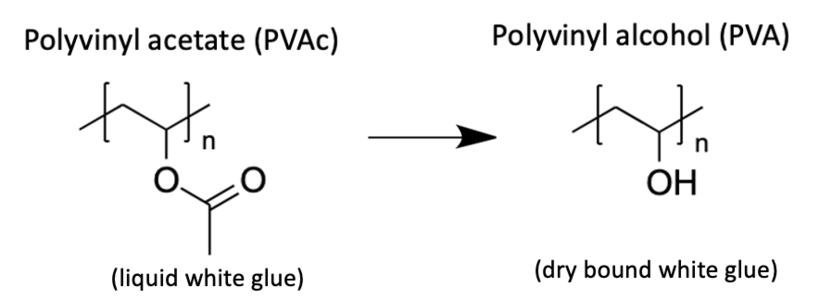As a novice and building the POF Bluenose, I was wondering what glues are best applied where? I've seen folks using the white pva and also the cyanoacrylate with the crazy long and curved nozzles. Assuming these are used for certain apps on the model? Any info would be much appreciated! Thanks and Happy Thanksgiving!
You are using an out of date browser. It may not display this or other websites correctly.
You should upgrade or use an alternative browser.
You should upgrade or use an alternative browser.
I leike cheap PVA because it comes apart fairly easily with isopropl alcohol when I screw up. I've almost used a full bottle of alcohol so far.
What perfect timing, Bo, I was just about to post a similar question. I'm on my second build and have used PVA and CA only. I have seen negative comments on the forum about CA, and I'm starting to see why. I don't like working with CA much. It seems to go bad after a while and doesn't cure as fast as it used to, except on my fingers, so I have to use clamps anyway. I like PVA as long as I can use clamps. Gluing some parts together I can't get clamps on it. I'll soon start my second layer of planking, the veneer. On my first build, I used CA on the veneer and wasn't too happy with it. The CA tended to soak through on some spots. Any recommendations on a replacement glue for CA?
My wife works at a local Hobby Lobby and they have this "Weld Bond White Glue". This stuff dries what I would consider very fast for a white glue. They also carry Syringes with different size tips that I load the Glue into. On my deck planking, I hold the part down for about 30 seconds and it is done !




Up front what I would describe as best is a PVA glue with quick dry, high tack characteristics and CA gel. For PVA glues (so called white wood glue) you want a glue that has high tack, quick dry characteristics. These are not necessarily characteristics of regular carpenter’s wood glues even though they are popular with many modelers. A high tack, quick dry PVA glue can be found in arts and crafts stores or from Amazon. I use Aleene’s Quick Dry Tacky Glue exclusively on my ship models for all wood to wood contact. The other glue is the CA glues. These glues work differently than PVA. The controlling characteristic is the consistency of the glue…thin or thick. I use thin CA glue to wick behind parts that I hold in place. But most often, I use CA gel (very thick). CA gel does not wick into the parts or the rigging thread as much as the thin. I can place drops of CA gel along a wood strip then place and hold for ten seconds. Water, or rather moisture, cures the CA. Each type of glue has different characteristic for grab, sheer strength, dry time, and tack. What is “best” is in the eye of the user but I have used Quick Dry Tacky glue and CA gel for years now…my models have not yet fallen apart…knock on my Timbers…gently…
PS: Donnie mentions Weldbond PVA. I would recommend the Weldbond as well. It has high tack quick dry characteristics. I know a professional modeler who recommends Weldbond and uses it on all of his ship models. Weldbond is available most easily from Amazon. I would have to get it from Amazon as it is not carried in my local stores that I have found. So I default to Aleene’s by sheer laziness as I can get it from my nearby craft store easy peasy. There are a lot of glues commercially available and they all work as defined by holding two pieces of something together. The trick is a glue that we can work “with” on ship models…
PS: Donnie mentions Weldbond PVA. I would recommend the Weldbond as well. It has high tack quick dry characteristics. I know a professional modeler who recommends Weldbond and uses it on all of his ship models. Weldbond is available most easily from Amazon. I would have to get it from Amazon as it is not carried in my local stores that I have found. So I default to Aleene’s by sheer laziness as I can get it from my nearby craft store easy peasy. There are a lot of glues commercially available and they all work as defined by holding two pieces of something together. The trick is a glue that we can work “with” on ship models…
Last edited:
Does Weldbond come apart with water or alcohol? Reversibility is important to me 
Thanks much all! Great info, direction, and guidance!
Thanks much for the detailed discussion Daniel! Great info and help! Much appreciated!Up front what I would describe as best is a PVA glue with quick dry, high tack characteristics and CA gel. For PVA glues (so called white wood glue) you want a glue that has high tack, quick dry characteristics. These are not necessarily characteristics of regular carpenter’s wood glues even though they are popular with many modelers. A high tack, quick dry PVA glue can be found in arts and crafts stores or from Amazon. I use Aleene’s Quick Dry Tacky Glue exclusively on my ship models for all wood to wood contact. The other glue is the CA glues. These glues work differently than PVA. The controlling characteristic is the consistency of the glue…thin or thick. I use thin CA glue to wick behind parts that I hold in place. But most often, I use CA gel (very thick). CA gel does not wick into the parts or the rigging thread as much as the thin. I can place drops of CA gell along a wood strip then place a hold for ten seconds. Water, or rather moisture, cures the CA. Each type of glue has different characteristic for grab, sheer strength, dry time, and tack. What is “best” is in the eye of the user but I have used Quick Dry Tacky glue and CA gel for years now…my models have not yet fallen apart…knock on my Timbers…gently…
PS: Donnie mentions Weldbond PVA. I would recommend the Weldbond as well. It has high tack quick dry characteristics. I know a professional modeler who recommends Weldbond and uses it on all of his ship models. Weldbond is available most easily from Amazon. I would have to get it from Amazon as it is not carried in my local stores that I have found. So I default to Aleene’s by sheer laziness as I can get it from my nearby craft store easy peasy. There are a lot of glues commercially available and they all work as defined by holding two pieces of something together. The trick is a glue that we can work “with” on ship models…
Thanks Donnie! Good info and technique on the syringes!My wife works at a local Hobby Lobby and they have this "Weld Bond White Glue". This stuff dries what I would consider very fast for a white glue. They also carry Syringes with different size tips that I load the Glue into. On my deck planking, I hold the part down for about 30 seconds and it is done !
View attachment 342587
View attachment 342590
Hi Kramer. While this is my first ship model, I'm a master woodworker over 50 years and have built a fair amount of furniture but have scaled down to mostly wooden boxes these days. For the thinly milled pieces on my boxes, I've used thick CA and have had great success with it, surprisingly over the long term as well! Although the thn CA not so much because as you mentioned, it really percs down into the wood pores and doesn't bond well as a result. Sounds like that high tack Weldbond might be something to definitely tryWhat perfect timing, Bo, I was just about to post a similar question. I'm on my second build and have used PVA and CA only. I have seen negative comments on the forum about CA, and I'm starting to see why. I don't like working with CA much. It seems to go bad after a while and doesn't cure as fast as it used to, except on my fingers, so I have to use clamps anyway. I like PVA as long as I can use clamps. Gluing some parts together I can't get clamps on it. I'll soon start my second layer of planking, the veneer. On my first build, I used CA on the veneer and wasn't too happy with it. The CA tended to soak through on some spots. Any recommendations on a replacement glue for CA?
Never knew that about PVA! Excellent tip Don!I leike cheap PVA because it comes apart fairly easily with isopropl alcohol when I screw up. I've almost used a full bottle of alcohol so far.
Great info, thanks Bud! Was wondering about seizing knots!Wood to wood I use Titebond II Premium, the one with the blue label. For wood to PE I use CA glue. To seize knots I use white glue.
I've never used alcohol to remove PVA. I've always used vinegar. Is alcohol better?
- Joined
- Feb 19, 2021
- Messages
- 12
- Points
- 8

I've been using Weldbond all along. Works great. I've been using CA on my planking since water-based glues can cause warping of thin materials. Also, I store my Weldbond with the opening down. I had some I hadn't used for a while and toward the end of the tube, the nozzle became clogged because the air in the tube caused some hardening of the glue. As with CA you can also use acetone to free it.
New shipwright, long time chemist. Sorry in advance for my compulsion to draw chemical structures, please don't fall asleep.I've never used alcohol to remove PVA. I've always used vinegar. Is alcohol better?
Wet white glue, PVAc, is a precursor polymer for polyvinyl alcohol, PVA, the dry polymer which bonds your work. Plain PVA is a polyalcohol and can be dissolved in water or alcohol ("like dissolves like"). The precursor polymer, PVAc, is insoluble in water but dissolves well in acetic acid, also known as white vinegar. Again, "like dissolves like", see the structures below. If you put something on with white glue, a mixture of vinegar and water is helpful as most people are pulling apart a partially cured joint (less than 24-48 hours in normal humidity). Isopropanol should work too and dissolves both the precursor and final product, although its more likely to make PVAc gummy.


Vinegar and water might be the better bet but I've never set up a controlled apples:apples comparison. The acetic acid fumes are less noxious than isopropanol and isopropanol is flammable (let extra air in the shop). My experience is that 99% isopropanol doesn't work well and that the 70% concentration works better, maybe it's the 30% water that helps. Warm water works best. Don't use hot water with vinegar or the vinegar will partially evaporate and reak, and definitely don't heat isopropanol at any concentration for any reason!
Remember, like dissolves like (sorry if I am bringing back high school or college trauma). Methanol and ethanol work on PVAc too, but my opinion is that IPA is your best bet if you really want to use an alcohol, considering safety and availability. 70% isopropanol is used on skin all the time to clean up cuts. Don't use beer.
If you go the Weldbond route, the manufacturer's recommendation is cold water on liquid glue if you can get to it quickly and acetone to dissolve dried glue. Acetone is workable but the fumes are strong and the vapor is flammable. Use LOTS of extra air in the shop. I'm not sure what acetone does to the condition of wood, maybe others can comment. I requested more info on the chemistry of Weldbond from the manufacturer. I am excited to get a little experience with this adhesive at Donnie's suggestion. I like the idea of a magical adhesive that dries faster than PVA, bonds metal, and has his stamp of approval. If I learn more, I'll share.
Finally, chemist tips.
1. Wear eye protection, you should already be wearing it in the shop anyway.
2. Wear nitrile gloves when working with solvents, especially when handling IPA for periods of time and acetone for any amount of time.
3. Don't be tempted to save money by buying the large economy bottle of organic solvents like acetone unless you really go through a lot of it in a short period of time. Flammable chemicals with noxious fumes are more manageable, in many ways, in smaller-sized portion. I know model shipbuilding has a reputation for being cheap (except tools, that's an XY chromosome thing), but when it comes to chemicals, less is more.
Glenn
Thanks Glenn. Are you saying that PVAc and PVA are the same thing? PVA is just dried PVAc?
Hi Don,Thanks Glenn. Are you saying that PVAc and PVA are the same thing? PVA is just dried PVAc?
That's right. The PVAc loses the acetyl group (the "Ac" in PVAc) and leaves behind a alcohol (the A in PVA). Of course it's more complicated, lots of additives and modifiers and things in the matrix, but that's the bulk reaction.
Donnie. I have a bottle of weld bond that a bought quite a while ago. I seldom use it as it is so darn thick I have to use a brush to apply it. I've tried it in my plastic squeeze bottles and syringes and still can't get the glue to come out as it's so thick. You can get it to come out of those syringes? Do you thin it? thanks.My wife works at a local Hobby Lobby and they have this "Weld Bond White Glue". This stuff dries what I would consider very fast for a white glue. They also carry Syringes with different size tips that I load the Glue into. On my deck planking, I hold the part down for about 30 seconds and it is done !
Last edited:
Weld Bond is my favourite glue. Thick, sets up quickly, dries crystal clear and sandable when fully cured..My wife works at a local Hobby Lobby and they have this "Weld Bond White Glue". This stuff dries what I would consider very fast for a white glue. They also carry Syringes with different size tips that I load the Glue into. On my deck planking, I hold the part down for about 30 seconds and it is done !
View attachment 342587
View attachment 342590





